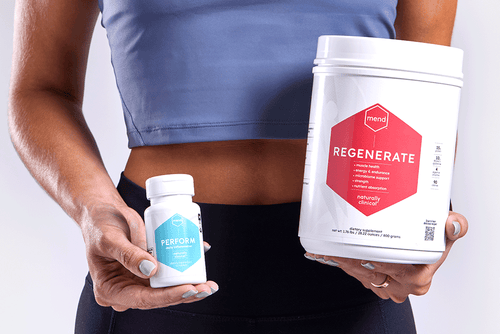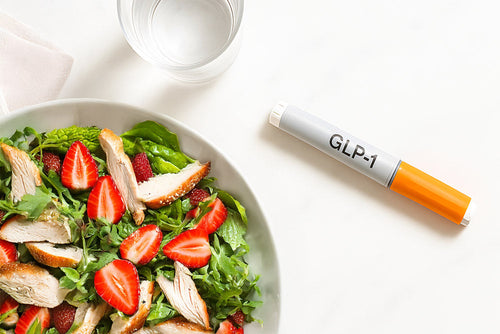This guest post was written by Ken Roycroft, MEND’s VP Product & Business Development and Post-Surgical Healing & Rehabilitation Coordinator at Ralph J. Venuto MD – Orthopedics & Sports Medicine
What is Tendinitis?
Tendinitis is inflammation or irritation of a tendon — fibrous cords which attach muscle to bone. The condition can cause pain and tenderness just outside a joint. It can happen during repetitive motion, or when a person overuses/injures a tendon, for example, when gardening or during sport.

While tendinitis can occur in any of your tendons, it is normally associated with an acute injury with inflammation and is most commonly found around your shoulders, elbows, wrists, knees or heels.
It can also be referred to as:
- Tendonitis
- Achilles tendinitis
- De Quervain’s tenosynovitis
or by some more common names such as:
- Tennis elbow
- Golfer’s elbow
- Jumper’s knee
- Pitcher’s shoulder
- Swimmer’s shoulder
In most cases, tendinitis can be treated with rest, physical therapy, and medications to reduce pain. If the tendinitis is more severe or if it leads to a rupture of a tendon, surgery may be advised.
Tendinitis Symptoms
Tendinitis usually occurs where a tendon attaches to a bone and associated symptoms can be:
- Pain at the site of the tendon and surrounding area which may gradually build up to be sudden and severe.
- Pain often described as a dull ache, especially when moving the affected limb or joint
- In some cases, the joint may feel weak, and the area may be red, swollen or warm to the touch.
- Tenderness.
- Mild swelling.
Other symptoms vary according to which tendon is affected:
If in the shoulder:
- Frozen shoulder – Loss of motion or movement known as “adhesive capsulitis”.
- Rotator cuff tendonitis – Usually dull, aching shoulder pain that can’t be tied to one location. Pain which often extends to the upper arm which also may be worse at night.
If in the elbow:
- Tennis elbow – Referred to as “lateral epicondylitis”, associated pain in the outer side of the elbow joint. Sometimes the pain extends down to the forearm and wrist. This condition probably affects 40% to 50% of all adult athletes who play racquet sports and can also be caused by any activity that repeatedly twists and flexes the wrist, such as pulling weeds, using a screwdriver, or even carrying a briefcase.
- Golfer’s elbow – Referred to as “medial epicondylitis”, it causes pain on the inner side of the elbow. Despite its name, it is more likely to be related to an occupation that requires repeated elbow movements, such as construction work, than to sports. When it does occur as a sports injury, medial epicondylitis can be triggered by repeatedly swinging a golf club or throwing a baseball.
- Jumper’s knee – Pain above or below the knee cap
- De Quervain’s disease – Pain in the back of the wrist near the base of the thumb.
- Achilles tendonitis – Pain typically 2 to 4 inches above the heel.
Causes of Tendinitis
Although tendinitis can be caused by sudden injury, the condition is more likely to stem from repetitive movement over time. Most people develop tendinitis due to their jobs or hobbies involving repetitive motions while using improper technique which can overload the tendon — leading to tendinitis.
Below is a list of activities or common causes of tendinitis:
- Gardening or raking
- Cleaning or scrubbing
- Grocery checking
- Woodworking
- Auto repair
- Shoveling
- Poor posture
- Painting
- Tennis
- Bowling
- Golf
- Skiing
- Throwing or pitching
Who is at Risk?
Even though anyone can get tendinitis, it is more common in adults and especially those over age 40. As tendons age they become less flexible or elastic, and therefore are easier to tear. In addition, tendinitis is really common in “weekend warriors,” people that play or exercise too hard only on weekends.
Treatment of Tendinitis
Most cases of tendinitis respond to self-care measures however, the quicker tendonitis is treated, the sooner recovery can begin.
The first step in treatment would be to rest the affected muscles and tendons as soon as possible and to do so for a few days to a few weeks to give the body time to repair itself.
If swelling or inflammation is present, ice is another recommended treatment option. Apply ice packs to the painful area for 20-minute periods, three or four times a day. You also should ice the area immediately after any activity that aggravates your pain and do so regularly. In addition, taking a nonsteroidal anti-inflammatory drug such as ibuprofen, naproxen, or aspirin may be advised to help relieve pain and swelling.
Depending on the location and severity of the tendonitis, you may also choose to wear a splint, brace, or sling for a short period of time.
It is also important to gently and regularly move the joint to avoid getting stiff, or “frozen. This is particularly important for tendinitis involving the shoulder.
If your tendonitis is serious, a physical therapist may be able to give you specialized treatment to help with your condition. They are also qualified to guide you through a rehabilitation program designed specifically to recover and regain strength, motion, and function following an injury such as tendinitis.
If your condition does not measurably improve over time following the above suggested protocols, seeking advice of your physician is highly recommended. In extreme cases, when nonsurgical treatments do not lead to good outcomes, surgical procedures can be used to realign tendons, remove bone spurs causing pressure on tendons or to remove areas of calcium buildup if any of these are contributing factors affecting your recovery.
Supplementing with a clinical nutrition product for your condition is also a good idea and can provide targeted nutritional support. It is for that reason that MEND Repair & Recover was designed. MEND Repair & Recover contains clinically studied proteins, amino acids, vitamins, minerals, and other nutrients to optimize healing, support bone and wound healing, and reduce low level inflammation.
Sources



